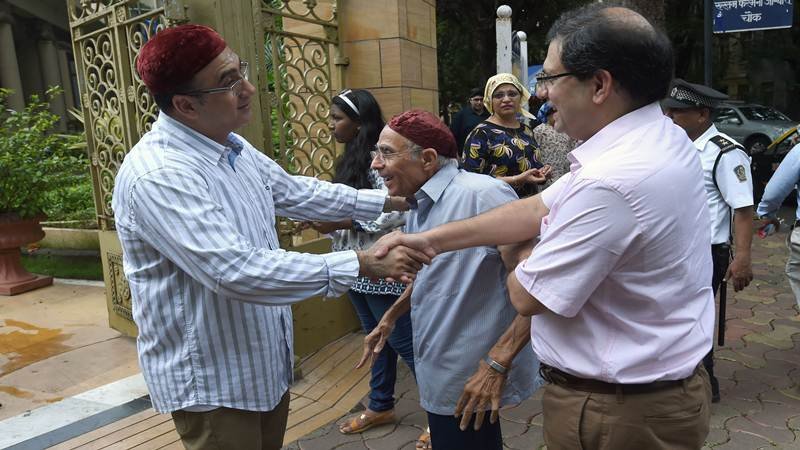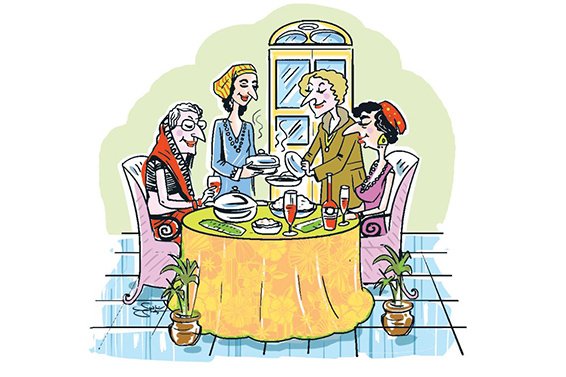Parsis ring in New Year
 Men donning traditional velvet caps, women in scarves around their heads and children in their best attire made it to the 169-year-old Seth Viccaji Meherji and Seth Pestonji Meherji Dar-e-Meher, also known as the old Parsi Fire Temple bringing the place alive on Wednesday. Most of them later crossed the road and headed to the Parsi Zoroastrian Anjuman in Secunderabad.
Men donning traditional velvet caps, women in scarves around their heads and children in their best attire made it to the 169-year-old Seth Viccaji Meherji and Seth Pestonji Meherji Dar-e-Meher, also known as the old Parsi Fire Temple bringing the place alive on Wednesday. Most of them later crossed the road and headed to the Parsi Zoroastrian Anjuman in Secunderabad.
Humour and food are something that the Parsi swears by and lunch was an affair in which the community savoured a typical meal of patrani macchi, dhansak and an assortment of delectable dishes. Noshir Mehta, former Ranji cricketer informs, “The afternoon meal is a perfect follow up to the morning ‘Ravo’ prepared with suji, milk, sugar and topped with dry fruits.”
New Year is a time to meet new and old friends and the same goes for the Parsi community as well. In the evening, the community makes it a point to go to the Zoroastrian Club. Shapoor Toorkey, a resident of Sindhi Colony says, “Throughout the year we do not get too many of our community at the club but, on New Year they make it a point as we get to meet old friends.”
Philanthropist Parsis
Parsis came to Hyderabad on the invitation of Sir Salar Jung I and have assimilated with the Deccan way of life. The community has not only jelled with the culture but has silently contributed to the growth of Hyderabad. Captain KF Pestonji shares, “Parsi entrepreneurs are known all over the country and here in Hyderabad as well, two brothers, Seth Viccajee and Seth Pestonji played an important role so much so that the Nizam entrusted the mint at Aurangabad to them. Consequently, the Parsis also minted their own currency and the Pestonshahi Sicca is a testimony to the Parsis enterprising nature.”
The contribution of Parsis to the city goes back to over 200 years. Nawab Sir Faridoon-ul-Mulk Bahadur was in charge of revenue and settlements during the sixth Nizam’s rule; Sohrabji Chenoy was given the title Nawab Shorab Nawaz Jung and was the Commissioner of Customs. Very few know that Faridoon Chenoy was responsible for the Manjira water supply system.
Philanthropy has been associated with the community. For instance, the Eduljee family when they came to know the vans at the Military Hospital in Secunderabad were few in number, immediately contributed one. Acts such as these are common and go unnoticed. The one issue that is worrying the community is their dwindling numbers.
Caught between traditional beliefs and changing times, the youngsters in the community are literally in a “Catch-22” situation. Kersi Patel, president of Zoroastrian Club says, “It is a fact that the numbers are falling and the number of deaths is more than the births in a given year. But we have survived for centuries and we will continue to do so.”
P Nalladaru, 70 concurs, “The Parsis were always a small community and will remain to be so.” No matter what their number, the community keeps their celebratory spirit at its affluent best, much like the culture of philanthropy it embodies.
Published on TheHansIndia





